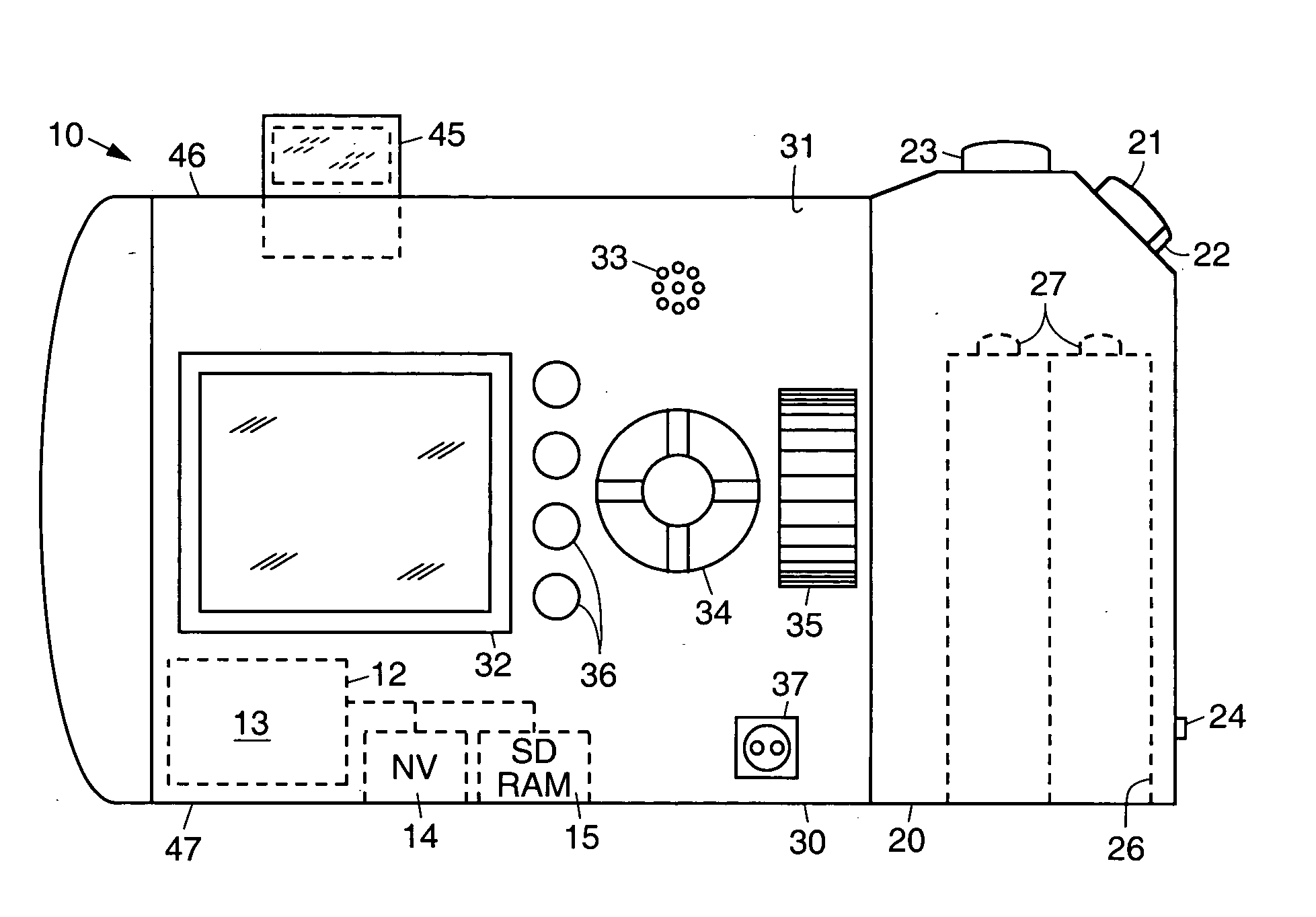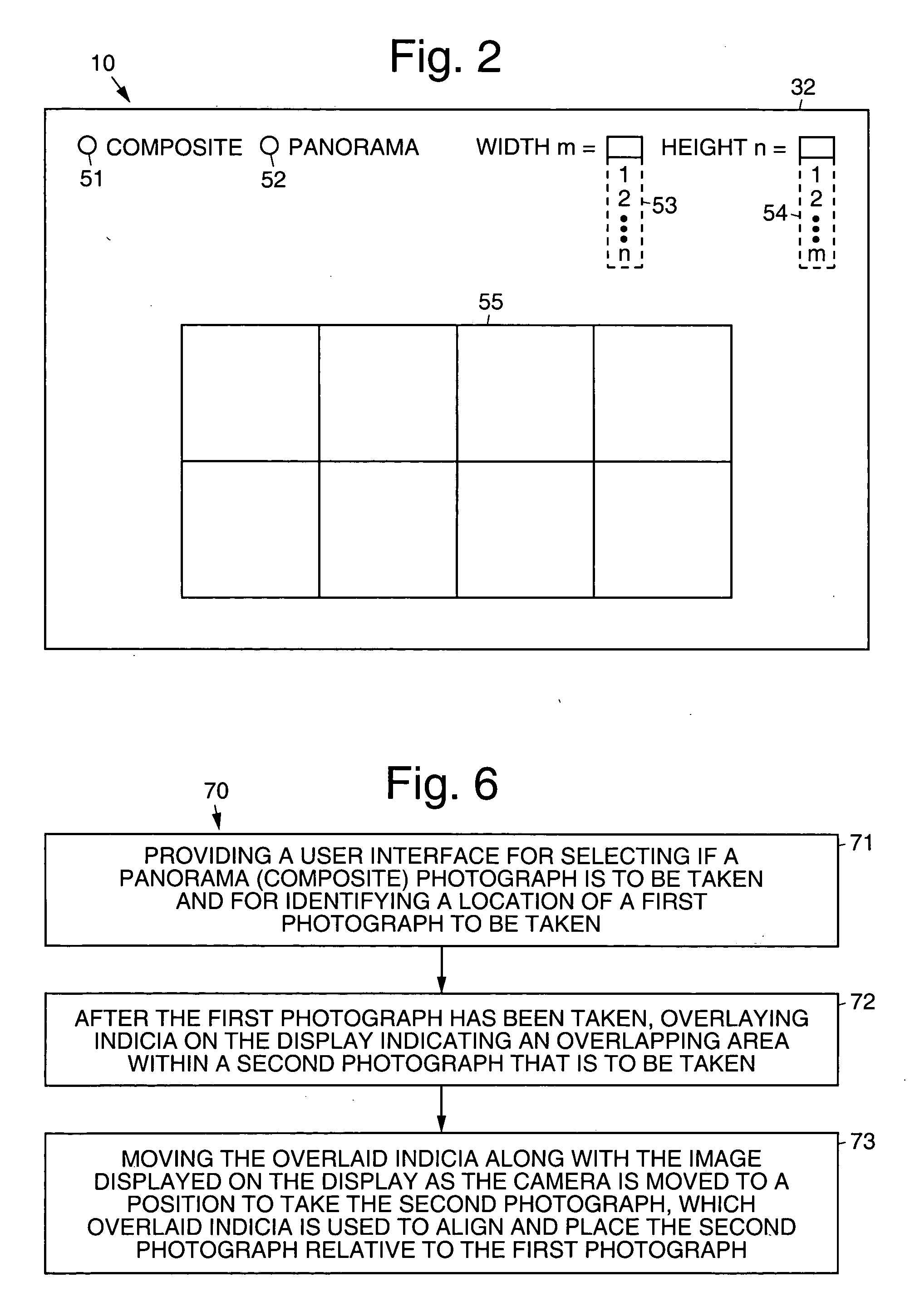Digital camera and method for in creating still panoramas and composite photographs
a digital camera and composite photography technology, applied in still video cameras, instruments, television systems, etc., can solve the problems of low efficiency, difficult to align well, and the process of taking composite photographs does not have any good support in current generation cameras, and achieves the effect of higher resolution
- Summary
- Abstract
- Description
- Claims
- Application Information
AI Technical Summary
Benefits of technology
Problems solved by technology
Method used
Image
Examples
Embodiment Construction
[0023] Referring to the drawing figures, FIGS. 1a and 1b are rear and front views, respectively, of an exemplary digital camera 10 that is designed to produce panorama (composite) images using the principles of the present invention. As is shown in FIGS. 1a and 1b, the exemplary digital camera 10 comprises a handgrip section 20 and a body section 30. The handgrip section 20 includes a power button 21 or switch 21 having a lock latch 22, a record button 23, a strap connection 24, and a battery compartment 26 for housing batteries 27. The batteries may be inserted into the battery compartment 26 through an opening adjacent a bottom surface 47 of the digital camera 10.
[0024] As is shown in FIG. 1a, a rear surface 31 of the body section 30 comprises a display 32 or viewfinder 32, such as a liquid crystal display (LCD) 32, for example, a rear microphone 33, a joystick pad 34, a zoom control dial 35, a plurality of buttons 36 for setting functions of the camera 10 and an output port 37 f...
PUM
 Login to View More
Login to View More Abstract
Description
Claims
Application Information
 Login to View More
Login to View More - R&D
- Intellectual Property
- Life Sciences
- Materials
- Tech Scout
- Unparalleled Data Quality
- Higher Quality Content
- 60% Fewer Hallucinations
Browse by: Latest US Patents, China's latest patents, Technical Efficacy Thesaurus, Application Domain, Technology Topic, Popular Technical Reports.
© 2025 PatSnap. All rights reserved.Legal|Privacy policy|Modern Slavery Act Transparency Statement|Sitemap|About US| Contact US: help@patsnap.com



